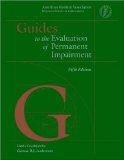Improve the Ogilvie Calculator!

So, here’s the deal: I want to build the absolute most comprehensive suite of calculators and tools for workers’ compensation professionals. ((Why? Some people have wacky hobbies. Maybe you build hockey arenas out of toothpicks. I build workers’ compensation calculators and give them away for free. If it will put you at ease, I hope to make money from advertising in the future.)) I also want your help to making them better.
In the last few days several people have sent me questions about the Ogilvie DFEC workers’ compensation calculator: ((Photo courtesy of nerissa’s ring))
- Is it possible to get an Ogilvie DFEC adjusted whole person impairment above 100%?
- I believe it might be theoretically possible to achieve an adjusted whole person impairment above 100% using the Ogilvie DFEC formula. I could easily include a small variation on the calculation that would prevent it from exceeding 100, but I have not done so because I wanted to replicate the the formulas set forth in Ogilvie as exactly as possible.
- Why can’t I use post-injury earnings of $0.00? What if they have no earnings at all?
- That’s an extremely valid point. If you try to use a post-injury earnings of “zero”, it will cause division by “zero” which is not a mathematically legal operation. Try post-injury earnings of $1.00 or $0.01. Doing so will give you an answer VERY close to what you need. ((I know it has a less than friendly error message about this. I’ll see what I can do about fixing that.))
- When do you round each calculation when performing the Ogilvie DFEC calculation?
- The WCAB en banc in Ogilvie rounds to three decimal places at one step and to four decimal places at a second step. The only way we know what they actually did is by extrapolating from the examples in the decision – they never actually state “round to four significant digits here, round to three significant digits there.” I have rounded exactly as they did in their examples.
- At the end of the day, there are two ways to perform the Ogilvie DFEC calculation: the exact way the WCAB did it (sometimes four, sometimes three decimal places) and the way they probably intended to do it (four decimal places until the end). I made the judgment call to use the formula as they performed it, warts and all.
- Why did I choose to round as the WCAB did? I think it is more defensible to calculate exactly as the Board did, rather than as I think the Board should have calculated.
- How do you put the Ogilvie DFEC adjusted whole person impairment into the rating calculator?
- At this point, you can’t use a different FEC Rank or an Ogilvie DFEC adjustment factor in the 2005 PDRS rating calculator on this site. In order to accomodate this, I would need to either rewrite the entire calculator or write a new calculator. One other possibility is that I could modify the Ogilvie DFEC calculation to provide one extra line of information – where it “runs the FEC numbers backwards.”
- Let’s take this example: Suppose the body part FEC rank is 1 and whole person impairment is 10. The normal FEC adjusted whole person impairment would be 11. Let’s suppose after applying the Ogilvie DFEC formula it turns out you should have an FEC rank of 8 instead. This would give you an Ogilvie DFEC adjusted whole person impariment of 14%. I could write a modification of the current Ogilvie DFEC calculator to put 14% into the FEC Rank chart and look up what whole person impairment you would need with an FEC rank of 1 to arrive at 14%. Would you find this a helpful interim fix? Please let me know by sending me an e-mail.
- Jay, why in the world did the Ogilvie DFEC calculator reference “standard disability”? Shouldn’t it say “whole person impairment”?
- You’re totally correct. I’ve fixed this. Mea culpa.
Here’s my request for your help. In order to make an Ogilvie calculation valid, you need to put in valid post-injury earnings of similarly situated employees. The WCAB in Ogilvie suggests several possible sources: ((I’ve copied the links directly from Ray Frost‘s Ogilvie spreadsheet/calculator. Ray has been kind enough to allow me the use of his extensive work restrictions lists. So, thanks Ray!))
- EDD Labor Market Information Division (LMID):
- US Dept of Labor, Bureau of Labor Statistics (BLS):
What do you use for post-injury earnings of similarly situated employees? If I had a better idea where people were looking it is possible that I might be able to automate the inclusion of this informaiton as well. Please drop me a line and let me know. If there is a general consensus, I’ll look into the possiblity of having this informaiton automatically imported from an external website.



